The gluteus maximus, or the glutes for short, is the largest, most powerful muscle in the human body, or it should be.
Unfortunately, too much time spent sitting and following poorly designed workouts means that a lot of people have next-to-no glute development and are victims of the flat-butt blues.
Some even go so far as to get glute implants, cosmetic injections, or wear contoured, padded undergarments to enhance the shape and size of their butts.
There is no need to suffer the ignominy of a flat butt – it’s a very trainable muscle. In this article, we reveal the best butt-building exercises around and provide you with a few tweaks and hacks to make your glute workouts even more effective.
Glute Anatomy
Before we get into the best exercises for fixing your flat butt, let’s take a quick look at the anatomy and physiology of your glutes. While this is not critical information (so skip this section if you wish), it will help explain why some glute exercises are better than others.
Level Up Your Fitness: Join our 💪 strong community in Fitness Volt Newsletter. Get daily inspiration, expert-backed workouts, nutrition tips, the latest in strength sports, and the support you need to reach your goals. Subscribe for free!
Your butt is actually four muscles…
Gluteus maximus
This is the muscle you are currently sitting on, but it’s more than just somewhere convenient to sit! Located on the back and side of your hip, the functions of the gluteus maximus are:
- Hip extension
- Hip lateral (external) rotation
- Hip abduction (superior or upper portion)
- Hip adduction (inferior or lower portion)
Gluteus medius
The gluteus medius is located above and beneath the gluteus maximus near the iliac crest (upper ridge) of the pelvis. It works alongside the gluteus maximus and also has some additional functions:
- Hip abduction (movement away from the midline of the body)
- Hip medial (internal) rotation
- Pelvis stabilization
Gluteus minimus
This is a small triangle-shaped muscle located within the posterior aspect of the hip. Like the gluteus medius, the gluteus minimus also works alongside the gluteus maximus, and its functions are:
- Hip abduction
- Hip medial rotation
- Pelvis stabilization
Tensor fascia latae
Meaning band of white tissue, the TFL is part of the glute complex despite not having the word gluteus in its name. It’s a biaxial muscle which means it crosses two joints – the hip and the knee. As part of the glute group, TFL is involved in:
- Hip internal rotation
- Hip abduction
- Pelvis stabilization
So, while the gluteus maximus might be the most prominent muscle in the glute complex, the other muscles deserve your attention too. Each one plays a part in forming the shape of your butt, and developing them all will help cure those flat-butt blues.
The 10 Best Exercises to Beat the Flat-Butt Blues
While the shape and size of your butt are determined by your genetics, there is still a lot you can do to build this group of muscles. These are the ten of our favorite (and therefore ten of the best!) exercises for increasing glute size, tone, and strength.
1. Hip bridge
Glute exercises don’t come much more basic than the hip bridge. In fact, you could probably stop reading this article and crank out a set right now! But don’t think for a moment that this exercise isn’t effective. When performed correctly, it’s actually a superior butt builder.
How to do it:
- Lie on your back with your legs bent and feet flat. Pull your feet in as close to your butt as you can.
- Pushing down through your heels, drive your feet into the floor and lift your hips up as high as possible.
- Pause with your hips raised and contract your glutes as hard as you can for a couple of seconds.
- Lower your butt back to the floor and repeat.
You can make hip bridges more effective by:
- Putting a booty band around your knees and pressing your legs apart
- Using one leg at a time
- Adding a pulse at the top of each rep
2. Fire hydrant
The fire hydrant is so-called because, when you do it, you look a bit like a dog cocking its leg to pee. Funny names aside, this exercise targets the muscles on the outside of your hips and glutes, which contribute a lot to the shape of your butt. This exercise is also good for improving hip stability and mobility.
How to do it:
- Kneel down on all fours so that your shoulders are directly over your hands and your hips are above your knees. Brace your core.
- Keeping your leg bent, lift one knee up and out to the side. Keep your body stationary and make sure the only thing that moves is your hip.
- Lower your leg and repeat.
- Rest a moment, and then swap sides.
Get more from fire hydrants by:
- Using a booty band
- Wearing ankle weights
- Straightening your leg to increase the length of the lever
Related: Fire Hydrant Exercise Guide
3. Hip thrust
If glute bridges no longer provide your butt with much of a workout, the hip thrust should be your next port of call. While similar, this exercise involves a larger range of motion and is usually done with added weight. Glute bridges are very lower-back friendly and a great way to train your butt with heavy weights.
How to do it:
- Sit on the floor with your upper back against a stable exercise bench. With a barbell across your hips, bend your legs and plant your feet firmly on the floor. Brace your core. Hold the bar in place using an overhand grip.
- Pushing through your heels, drive your feet into the floor and lift your hips up until they are roughly level with your knees and shoulders. Take care not to hyperextend your spine.
- Lower your butt back to the floor and repeat.
Use the following tips to get more from this exercise:
- Use a booty band
- Place your feet on a raised surface to increase your range of motion
- Use one leg at a time
- Replace the barbell with a resistance band to increase tension at the end of each rep
4. Romanian deadlift
The primary function of the glutes, and therefore one of the best ways to train this muscle, is hip extension. You extend your hips whenever you walk, run, jump, or lift. Romanian deadlift are a very hip hinge-centric exercise, so they deliver a superb glute workout. In addition, Romanian deadlifts also work your hamstrings and lower back.
How to do it:
- Hold a barbell in front of your thighs with an overhand or mixed grip. Alternatively, you can use dumbbells.
- Stand with your feet about hip-width apart, knees slightly bent. Brace your core.
- Without flexing your legs, push your hips backward and lean forward as far as your flexibility allows. Do not round your lower back.
- Drive your hips forward and stand back up.
Get more from the Romanian deadlift by:
Level Up Your Fitness: Join our 💪 strong community in Fitness Volt Newsletter. Get daily inspiration, expert-backed workouts, nutrition tips, the latest in strength sports, and the support you need to reach your goals. Subscribe for free!
- Using one leg at a time, i.e., single-leg Romanian deadlifts
- Standing on an unstable surface, e.g., a BOSU or Airex pad
- Pausing for 2-3 seconds at the bottom of each rep
5. Conventional deadlift
Deadlifts are part of powerlifting, and bodybuilders do them as part of their back workouts. But, the deadlift is also a heck of a glute exercise. Deadlifts involve a significant hip hinge movement, which is where your glute work comes from. Powerlifters often have massive butts, and the deadlift is probably part of the reason.
Read more: Learn how to deadlift in this in-depth guide.
To make deadlifts more glute-centric:
- Stand on a 4 to 6-inch platform and do deficit deadlifts
- Do resistance band deadlifts
- Do snatch grip deadlifts
6. Kettlebell swing
Kettlebells have been around for centuries, but, largely because of CrossFit, they’re popular again, and most gyms have at least a few. They’re common in home gyms, too. Of all the exercises you can do with a kettlebell, the swing is arguably one of the best. It’s a great butt builder and fat burner, and you can use it for conditioning, too. All in all, kettlebell swings are a must-do butt exercise.
How to do it:
- Hold your kettlebell in front of your hips using an overhand grip. Stand with your feet about shoulder-width apart, toes turned slightly outward. Brace your core and pull your shoulders down and back.
- Bend your knees slightly, hinge forward from your hips, push your butt back, and lower the kettlebell down between your knees. Do NOT round your lower back.
- Drive your hips forward as if you were doing a standing long jump. Use this momentum to swing the kettlebell forward and up to shoulder level. Keep your arms straight.
- Using your abs and lats, swing the kettlebell back down and hinge at your hips again.
- Transition immediately into another rep.
Make kettlebell swings even better by:
- Tensing your glutes as hard as you can at the top of each rep
7. Plié Squat
Want a butt like a ballerina? Then try some plié squats. A plié squat is a squat done with a wider-than-normal stance. How wide? Typically, around 1.5-times wider than your shoulders. This increases glute and hip engagement and delivers a great butt workout without weights. This exercise is also good for hip mobility.
How to do it:
- Stand with your feet wider than shoulder-width apart. Turn your toes outward to about 45 degrees. You can turn your feet out more if your flexibility allows. However, make sure this movement comes from your hips and NOT your knees. Your knees and toes should point in the same direction.
- Stand up tall, brace your abs, and look straight ahead. You can also raise your arms out to the side or in front of you for balance if you wish.
- Keeping your torso upright, bend your legs, push your knees out, and descend until your thighs are roughly parallel to the floor. Try not to lean forward, and do not allow your lower back to round.
- Stand back up and repeat.
Get even more from this excellent exercise by:
- Putting a booty band around your knees
- Tensing your glutes as hard as you can at the top of each rep
- “Spreading the floor” with your feet, i.e., push your feet apart
8. Wide stance squat
Powerlifters do wide stance squats to reduce the distance they have to move the weight to score a good lift in competition.
However, stepping out into a wider-than-normal stance is also an excellent way to make your glutes work harder. You can do wide stance squats with a barbell on your back or a single kettlebell or dumbbell held in front of your hips.
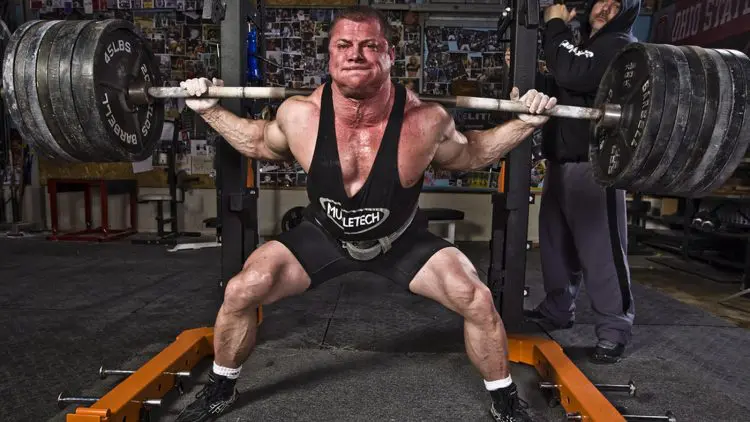
How to do it:
- Place a barbell in a squat rack, so the bar is about shoulder level. Grab the bar with a slightly wider than shoulder-width grip and duck under it. Press your upper back against the bar so it sits on your traps and NOT your neck. Brace your abs and pull your shoulders down and back.
- Lift the bar off the supports and take 1-2 steps back. Move your feet out so that they are wider than shoulder-width apart. Turn your feet out slightly so your toes and knees are pointing the same way.
- Pushing your feet and knees outward, push your hips back and squat down until your thighs are roughly parallel to the floor. Do not round your lower back. Instead, keep your upper body tight and look straight ahead.
- Without bouncing, drive your feet into the floor and stand up straight. Keep pushing your knees outward. Reset your core and repeat.
You’ll need to experiment to find the ideal foot placement for wide stance squats. Start with your feet slightly outside shoulder width and adjust from there. Move your feet in or out until you find the most comfortable, powerful position.
Make wide stance squats more effective by:
- Putting a booty band around your knees
8. Reverse lunges
Lunges are a great glute exercise. Not only do they involve a whole lot of hip extension action, but they also activate your hip stabilizers as these muscles have to work harder than usual to stop your knees rolling in or out. All lunge variations are good for your glutes, but reverse lunges could be the most butt-centric of the lot.
How to do it:
- Stand with your feet together and your arms by your sides.
- Take a large step backward, bend your legs, and lower your rearmost knee to an inch above the floor. Lean forward slightly, but make sure you don’t round your lower back and that your front knee stays behind your toes.
- Push off your front leg and return to the starting position. Do your next rep with the opposite leg and then alternate for the duration of your set.
You can make reverse lunges even more effective by:
- Starting each rep from a 4 to 6-inch platform, i.e., deficit reverse lunges
- Wearing a weighted vest or holding dumbbells
9. Cable pull-through
The cable pull-through is a mighty glute exercise! In fact, powerlifters use it to increase deadlift and squat performance. After all, those exercises are powered by the glutes. As an added benefit, cable pull-throughs are very lower back-friendly and ideal if you suffer from lower back pain.
How to do it:
- Attach a rope handle to a low pulley machine. Stand with your back to the weight stack, feet astride the handle.
- With your abs braced and shoulders down and back, bend down and grab the handle with both hands. Stand up and take a couple of steps forward to tension the cable.
- Stand with your feet shoulder-width apart, knees slightly bent, hands in front of your hips. This is your starting position.
- Push your hips back and lean forward until you feel a deep stretch in your hamstrings. Keep going until your hands travel behind your knees. Do not allow your back to round. Maintain a neutral spine throughout, and that includes your upper back and neck.
- Drive your hips forward and stand back up, locking your knees and tensing your glutes as you reach the top of your rep.
- Hinge forward again and repeat.
There isn’t a great deal you can do to make this exercise better, but it’s good to know that you can also do it with a resistance band, making it ideal for home workouts.
10. Banded kneeling hip thrust
This low-tech but high-effect butt-building exercise puts your glutes under a lot of tension as you reach the midpoint of each rep. There is no load on your spine, so it’s a very lower back-friendly exercise. While this exercise is typically done kneeling, it can also be done standing.
How to do it:
- Attach a loop-type resistance band to a low anchor point. Then, with your back to the anchor, kneel down with the band around your waist. Shuffle forward to tension the bend.
- Push your hips back, kneel down, and then drive them forward and up against the tension offered by the band. Squeeze your glutes at the end-point to fully contract the target muscles.
- Sit down and back, and then repeat.
Make this exercise harder by using a stronger band. But, if you are using a very strong band, it may be necessary to brace and balance yourself by holding onto something like an exercise bench or the uprights of a squat rack.
More Effective Exercises and Workouts:
- Glutes Ahoy! The Bigger Hips Workout
- Gluteus Minimus Exercises For Rounder Hips & a Jaw-Dropping Side Butt
- Frog Squat Exercise Guide and Videos
- Dating A Fit Chick-What To Expect
- 4 Reasons Why You Should Be Doing Glute Ham Raises
- How To Grow Bigger And Stronger Glutes
- Bakhar Nabieva – “Miss Iron Bum”
- The 5 Best Hip And Butt Exercises
Exercises to Beat the Flat-Butt – Wrapping Up
There is no reason to go through life with a soft, flat, weak, or flabby butt! There are plenty of exercises you can do for your glutes, and many of them are perfect for home use. Most of the others are also pretty low-tech, so anyone with access to a basic gym should be able to do them.
While the ultimate size and shape of your glutes are determined by your genetics, everyone can improve the condition and appearance of their butt without resorting to implants, injections, or enhanced undergarments. It’ll just take some time, effort, and perseverance.
So, start training your glutes like you mean it, and kiss the flat-butt blues goodbye!

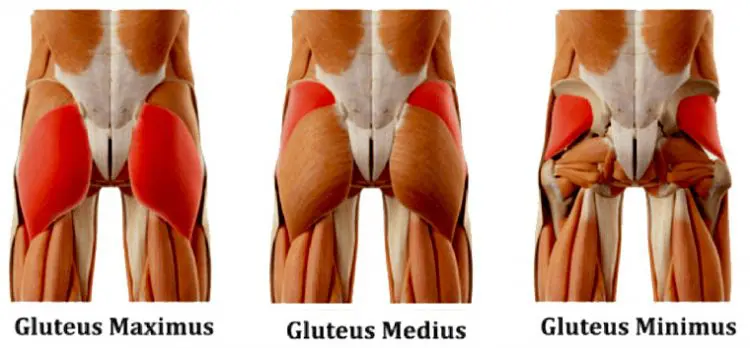
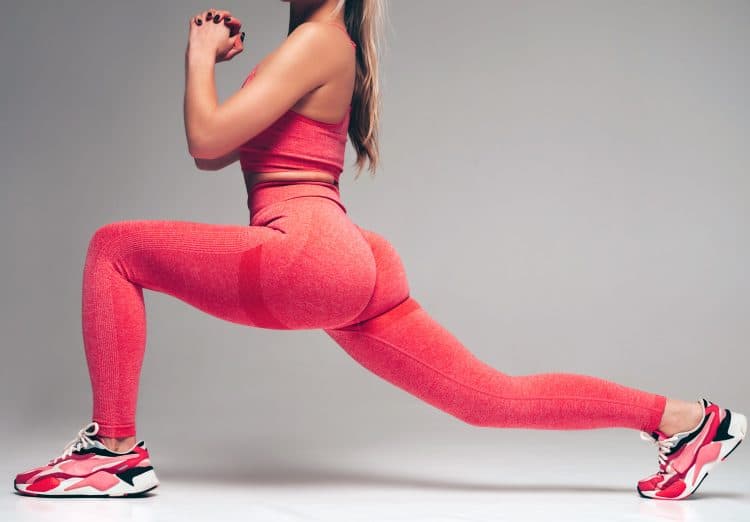



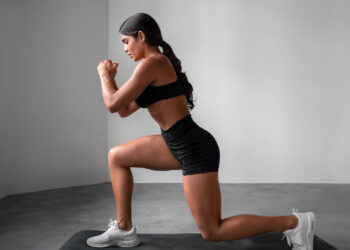
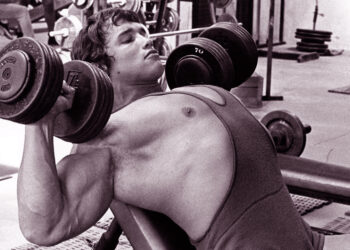
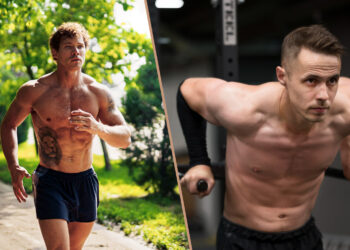
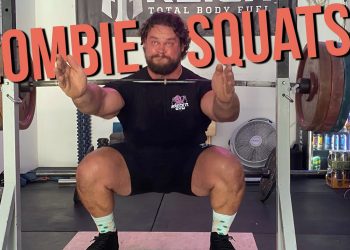

Can this be done at home without gym
Hey Jim,
There are several exercises on the list that require nothing more than bodyweight so they’re ideal for home workouts. Several of the other exercises that do require equipment can be modified for home use, e.g., using resistance bands instead of barbells/cables. Ultimately, you can achieve a high level of fitness and strength without stepping foot in a gym, although you will need to be a bit more selective with your exercises. Plus, fewer ways to overload means you’ll probably have to do more reps to fatigue your muscles, but that’s a small price to pay for the convenience of working out at home.
I hope that helps!
Patrick.